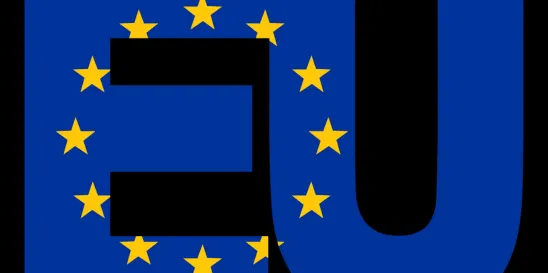While many have focused in recent months on the US enforcement of the forced labor import ban (19 U.S.C. 1307) and the Uyghur Forced Labor Prevention Act (UFLPA) (Public Law No. 117-78), the EU is working on its own set of regulations prohibiting products made with forced labor from entering the EU market. A proposal for a regulation of general scope, presented in September 2022, is now reaching the last legislative phase. However, with limited time left before the EU elections, there is some risk of negotiations delaying until after fall 2024.
Prohibiting Forced Labor Products
The two co-legislators, the Council of the EU (Council) and the European Parliament (Parliament) are negotiating with the European Commission (Commission) on a final text prohibiting products made with forced labor in the EU. The publication of the Proposal fits into EU human rights policy priorities and supports corporate accountability initiatives. The Council’s negotiating mandate strengthens the role of the Commission regarding forced labor investigations in cases where products concern the union interest. It also directs collaboration between member state authorities and the Commission throughout the phases of the process leading to the “banning” of a product.
The proposal is expected to significantly affect companies with supply chains exposed to high-risk jurisdictions, with implications for due diligence and supply chain management. Its objective is to ban all products placed within the EU market, i.e., products manufactured in the EU for domestic consumption and export, as well as imported products. The proposal adopts a “non-discriminatory” approach and covers all products where forced labor has been used at any stage of extraction, harvesting, production or manufacture.
EU Entity List
Implementation of the proposal will fall within the competence of member states’ national authorities. Each member state will appoint one or more competent authorities that will implement and oversee the enforcement of the regulation. The Council has also proposed appointing a lead competent authority in cases of cross-border investigations, a change which will likely be agreed upon by the end of negotiations.
Although the Commission initially opted for not creating an Entity List similar to the UFLPA Entity List or the list of Withhold Release orders issued under 19 U.S.C. 1307 in the US, MEPs amended this proposal to mandate the creation of a list of geographical areas and economic sectors at high risk of using forced labor. For goods produced in these high-risk areas, authorities would no longer have to prove that people have been forced to work, as the burden of proof would be placed on companies sourcing in those geographies or sectors, similar to the UFLPA’s rebuttable presumption.
Likewise, MEPs have adjusted the definition of forced labor to conform with the International Labor Organization (ILO) standards, encompassing “all work or service which is exacted from any person under the menace of any penalty and for which the said person has not offered himself or herself voluntarily.”
The enforcement, and ultimate success, of the regulation will rely on the coordination of the member states and facilitation by customs authorities.
Process
As it currently stands, the proposal establishes the following process:
-
Preliminary Phase Investigation
The competent authority will take a risk-based approached to assess whether there is a likelihood that an entity is violating the forced labor prohibition. The competent authority will evaluate all relevant information such as submissions or allegations made by third parties, as well as identifiable and verifiable risk indicators such as those identified by international organizations like the ILO. The competent authority will also have access to a database of forced labor risk areas that includes specific products and geographic areas identified by experts.
-
Investigation
If the authority finds evidence indicating a violation of the forced labor prohibition, then the authority can decide to initiate an investigation of the relevant entity. The relevant entity must be notified within three business days of the decision to investigate, and the authority must clearly state (a) the possible consequences of the investigation, (b) the products subject to the investigation, (c) the reasons the investigation was initiated and (d) how the entity can submit documentation or other relevant information to the authority.
The investigated entity must submit any information that is necessary for the investigation including information about the products, the manufacturer, producers and product suppliers. This information must be submitted within 15 business days of the request or within a granted time extension.
-
Decision
The competent authority will evaluate all evidence and establish within a reasonable time period from the initiation of the investigation whether an entity violated the prohibition on forced labor. The decision will clearly state the findings of the investigation and the supporting evidence. If it is determined that a violation has occurred, the authority will adopt a decision that will contain (a) a prohibition on the supply, distribution, consumption or use on the union market and export of the products of concern, (b) an order for the entity to withdraw all relevant products already placed or made available on the market and (c) an order for the entity to dispose of, donate or recycle the relevant products according to the national law. The decision will clearly identify the products, manufacturers, producers and product suppliers effected by the order. The entity will have not less than 30 business days to comply with the decision and no longer than necessary to withdraw relevant products. All decisions by the competent authorities will be recognized by other member states.
The proposal requires the competent authorities of each member state to inform the Commission of their decisions regarding the choices to initiate preliminary investigations, investigations and the decision to prohibit products on the market. The Commission will make decisions available on a dedicated website. In addition to an interconnection system allowing automated communication of decisions, the Commission will also develop a public database of forced labor risk areas or products which will list the geographic and economic sectors of highest risk. To assist potentially affected companies, the Commission will issue guidelines on due diligence and detecting forced labor in a supply chain.
-
Review of Decision
If an entity complies fully with the decision and shows that they have fully eliminated forced labor from their operations and relevant products’ supply chain, the competent authority will withdraw the decision.
Separately, an investigated entity has the possibility of requesting the review of a decision within 15 business days from receipt of the decision or five working days for perishable goods, animals and plants. The competent authority will approve or deny the request for review within the 15 or five business day window. Entities effected by decisions also have the option of judicial review regarding the procedural and substantive legality of the decision.
-
Companies’ Role in Responding Effectively
The EU maintains that the proposal intends to provide adequate incentives for companies, firstly, to cooperate proactively with the competent authorities and stakeholders and, secondly, to adequately address identified cases of forced labor.
Application
Companies must undertake appropriate measures to identify and eliminate any risk of forced labor in their supply chains. This should include a thorough analysis of the labor conditions in all the countries where they operate and cover their suppliers and subcontractors.
The specific measures to be adopted by each company will largely depend on the sector and supply chain in which a company operates, as well as on the type of product and the company’s resources. The EU relies on internationally recognized due diligence instruments (UN, ILO and OECD) which could be used as benchmarks in that exercise. Additionally, companies must begin to develop internal processes to ensure that mitigation and elimination plans for such forced labor risks are in place, not only to ensure compliance with EU norms but also as a measure to prevent possible reputational risks. The legislative proposal is still under negotiations and thus subject to further changes.









 />i
/>i

